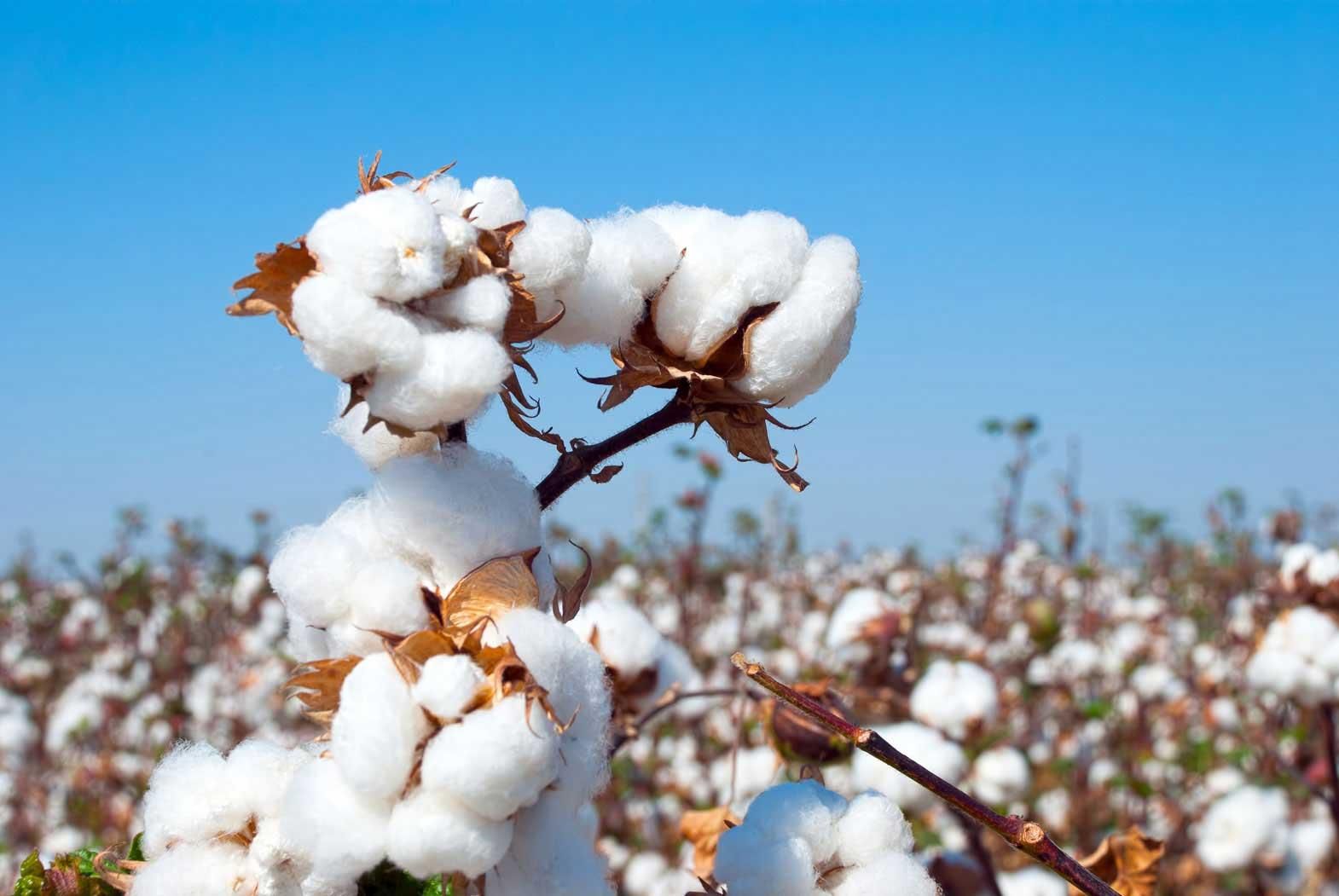Indiantextile and garment companies are aware of the potential of Egypt as a buyerand supplier of\ cotton and other textile goods. In October last, 33 Indiancompanies participated in the third edition of INTEXPO Egypt, the Indiantextiles exhibition in Egypt. However, it appears that many Indian companiesprefer a 'wait and see' policy towards Egypt. They may have good reasons to doso, reports Jozef De Coster
The dramatic events of the January2011 uprising in Egypt and the successive ousting of two presidents (firstHosni Mubarak, and in July 2013 Mohammed Morsi) drew worldwide media attentionon the political and social situation in Egypt. Hundreds of thousands ofcivilians came out on the streets to plead for more freedom and social justice.Very little has been attained. Egypt has been touched, but not transformed bythe forces of collective social imagination. Today, it's again 'business asusual', also in the Egyptian cotton, textiles and garments industry, where bigstructural problems continue lingering unresolved.
One of the most stinging sectoralproblems is Egypt's inability to make good use of the Nile Delta's high quality,extra-long staple cotton. This cotton is praised as being the best in theworld. However, most of it is exported as raw material without any valueaddition within Egypt. Also, because of insufficient income from cotton, NileDelta farmers are increasingly shifting to the cultivation of other crops. InJanuary 2015, the Egyptian government announced that it would no longer pay asubsidy of 350 Egyptian pounds ($45) per qintar-a unit that equates to 160kg-of high quality cotton. In July 2015, intending to protect Egyptian cottonfarmers, the agriculture ministry banned cotton imports. "The ministry iskeen on Egyptian cotton regaining its glory on all levels," it saidannouncing the ban.
However, only a week later,probably alarmed by anxious textile manufacturers who depend on importedcotton, the government reversed the decision. This sudden U-turn unavoidably castdoubt on the government's ability to revive the country's declining cottoncultivation. According to Indexmundi statistics, Egypt produced 2.2 millionbales of cotton in 1960, hardly 1 million bales in 2000 and only 340,000 balesin 2015. It should be added that Egypt did not succeed in building acompetitive man-made fibre supply chain either.
The Egyptian Misrayon and MisrPolyester companies were merged in January 2008 under the name Misrayon &Polyester Fiber Co to join forces and complete a polyester fibre developmentproject. The project started production in May 2010. But Egyptian textilecompanies still have to import most polyester and viscose materials. Accordingto the Textile Export Council, Egypt has more than 32 spinning mills which produceacrylic yarns for applications such as sweaters, blankets, socks, sportswear,handicrafts, and curtains. But the ideal of total integration of the acrylicsupply chain from fibre to fashion recently suffered a blow. Alexandria Fiber(AFCO), a company of the Indian Aditya Birla Group, was established as ahigh-tech acrylic operation in 2006 with a capacity of 18,000 MT/year. In 2009,capacity was increased to 38,000 MT/ year. Alexandria Fiber boasted being theonly acrylic fibre plant in Africa and Middle-East region and having installedthe most modern technology from Japan (Exlan). However, in 2014, the companynotified liquidation. In January 2016, the business intelligence company Zawyastill presented Alexandria Fibre as 'under liquidation'.
Another big problem is the inability of Egypt's spinning and weaving industry to supply quality products to be used by the garment export industry. The ginning and spinning of domestic cotton, and the weaving of cloth is mainly in the hands of large state companies with very obsolete machinery. It's believed that most of them are making losses. It's out of the question that they can raise the capital needed to modernise the mills.
So, Egyptian garment exporters will also in the future have no choice than to import most of the fabrics they need, taking into account the rules of origin imposed by the QIZ Agreement (for exports to the United States) and the Euro-Mediterranean Partnership Agreement (for exports to the European Union). The main export markets for Egyptian clothing are the US, UK, Turkey and Germany. During the first 10 months of 2015, the share of the US in total Egyptian garment exports attained 56 per cent. The Egyptian Qualifying Industrial Zones (QIZ) arrangement, signed in December 2004, allows Egyptian products customs-free access to US markets, provided these products satisfy an 11.7 per cent Israeli content. At least 35 per cent of the products' value must be added in the QIZ.
Beside these two major structural problems, there are several other ones: low labour productivity (counter balancing the low wages in the industry where garment operators start with just 800 Egyptian pounds or $102 a month), poor infrastructure, problematic power supply, difficult access to finance.
Recovering from the 2011-2013 turbulence
The Egyptian textiles and clothing industry is gradually recovering from the effects of the January 25 uprising (called 'the Revolution' by many Egyptians). Even during the most difficult period, in spite of strikes as well as the security and logistics issues, most Egyptian companies succeeded in continuing their activities. In 2011, textiles and garment exports showed a normal growth rate. Only in 2012, Egyptian exports of yarns and fabrics, home textiles and ready-made-garments declined. Then they started growing again (See Table 1).
Though political stability was restored after July 2013 when president Mohammed Morsi was removed from power to make place for president Abdel Fattah el-Sisi, (the crackdown reportedly left 1,400 dead and 16,000 detained), numerous Egyptian garment factories that had been weakened by the turbulence of the 2011-2013 period, closed shutters.
The government raised the prices of electricity and natural gas in July 2014, especially those paid by the industry. Labour and water bills also increased. Because of security concerns, the government made it harder to import many categories of chemicals. Also, the fact that the Egyptian pound since mid-2013 has been strengthening against the Euro, is making exports more difficult. Meanwhile, the currencies of many of Egypt's competitors were weakening, making their products more attractive.
Indians keep interest in Egypt
Not less than 33 Indian companies participated in INTEXPO Egypt early October 2015, suggesting that the Indian industry still believes in Egyptian potential for trade. They showcased yarns and fabrics such as suits, shirts and dress materials, as well as furnishings and home textiles. Egypt is not a big market for India, but it is not an unimportant one either. Besides, Egypt's textiles and garment imports are growing fast (See Table 2).
Indian textiles and clothing exports to Egypt amounted to approximately $360 million during fiscal year 2014-2015. Man-made fibre textiles were the dominant exported products with a value of $179 million, followed by cotton at $167 million, apparel at $9 million, carpets at $3 million, and jute at $2 million.
At the last edition of Cairofashion & Tex trade fair in March 2016, groups of foreign exhibitors were present from China (41), Turkey (13) and Syria (around 25, most of them refugees having established factories in Egypt). No group of Indian companies exhibited. However, a few Indian traders were busy presenting Indian textile materials to Egyptian garment manufacturers. It appears from Table 2 that Egyptian imports are rising fast, especially that of ready-made garments.
Indians now favouring Ethiopia above Egypt
His company Velocity now has five factories running in Egypt with a combined workforce of 4,000 nd a monthly capacity of 350,000 knits/ activewear and 650,000 denim and non-denim articles. Customers are companies like Zara, Gap, Vanity Fair, Target, Levi's. Sinha's decision to make big new investments in Mekele, Ethiopia instead of expanding his Egypt facilities, casts doubts on the comparative advantages of Egypt for exporting garments.
At its Mekele plant, Velocity'sknits capacity (750,000 pcs per month) will equal that of denims (also 750,000). It looks as if Sinha wants to make Velocity Mekele a showcase of some of the most advanced management ideas (lean factory, learning organisation, kaizen) and manufacturing technologies. He also aims to invest in the greenest possible as the most efficient technologies and equipment (e.g. Lectra automatic cutting, laser finishing).
Part of Velocity's plan to build a multi-faceted new 'textile townshop'in Ethiopia, and not in Egypt, is the construction of a polyester mill (knitting and dyeing) with a capacity of around 3,000 tons/year. Velocity will use approximately 50 per cent of the fabric and sell the balance to other companies. For some time, the polyester yarn will have to be imported, but once Indorama's polyester fibre project for Ethiopia is achieved (plans are under discussion with the Ethiopian government), Velocity can buy the fibre locally and will then integrate the spinning of yarn in the Mekele mill, starting with around 3,000 tons/year capacity.
A new textile city in Minya
The implementation phase will probably result in many headaches since huge investments will be needed to modernise the ginneries (on average more than 100 years old), spinning mills, weaving factories, dyeing and finishing units. Will the government come over the bridge with money? With a direct employment of 400,000-1.2 million people (according to some estimates even more than 2 million people), the textiles and garment industry is the largest industrial employer in Egypt. Also, the importance of the sector as a foreign currency earner cannot be undermined.
Deeming it very difficult to transform the old state textiles companies in productive, profit-making enterprises, some Egyptian industrialists have plans to create a new textiles city. In Minya, some 200 km south of Cairo, about 1.3 million square metres have been set aside for the establishment of a new textiles city, which is to be a joint-venture with the China National Textile and Apparel Council (CNTAC). A memorandum of understanding with CNTAC was signed in January 2016. It is to be a completely private Chinese and Egyptian investment.
Why in Minya? This city, dubbed by locals as 'Bride of Upper Egypt' is close to the Red Sea, which would facilitate exports to Sub-Saharan Africa, the Mediterranean area and North Africa. It would enable Egyptian manufacturers to obtain a high speed to market, which is crucial for export-oriented garment makers. Mohammed Kassem, the chairman of the Ready-Made Garments Export Council of Egypt, believes that Minya can become an important textiles hub to supply yarns and fabrics to garment makers across Africa. He thinks that the industry will grow very fast in Africa, which will translate into huge demand for yarn and fabric. The textiles city in Minya will focus on spinning, weaving, dyeing and finishing.
According to would be-investors, Minya has what the existing textiles city Mahalla El-Kubra on the Nile Delta does not have in sufficient quantities: land and labour. Eventually, the investors plan a series of new textiles cities south of Cairo all the way up the Nile until Aswan.








Comments